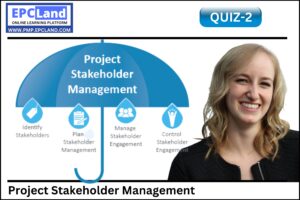Question 1:
Which of the following is NOT a stakeholder engagement technique?
Explanation: Control charts are not a stakeholder engagement technique. Control charts are statistical tools used for monitoring and controlling project processes, while stakeholder engagement techniques include methods such as surveys, negotiation, and brainstorming to actively involve stakeholders in project decisions and activities.
Question 2:
What is the primary purpose of a stakeholder analysis?
Explanation: The primary purpose of a stakeholder analysis is to assess stakeholder interests and influence. It helps project managers understand stakeholders' needs, expectations, attitudes, and potential impact on the project. The analysis helps in developing appropriate stakeholder engagement strategies and communication plans.
Question 3:
What is the first step in stakeholder identification?
Explanation: The first step in stakeholder identification is reviewing organizational charts. Organizational charts provide an overview of the hierarchical structure, departments, and key roles within the organization. They help identify potential stakeholders based on their positions and responsibilities.
Question 4:
Which stakeholder engagement strategy involves addressing issues and concerns promptly and seeking win-win solutions?
Explanation: The collaborate strategy involves addressing issues and concerns promptly, seeking win-win solutions, and actively involving stakeholders in decision-making processes. This strategy is used for stakeholders who have high power and high interest in the project.
Question 5:
Which stakeholder engagement technique is best suited for gathering and prioritizing stakeholders' ideas and opinions?
Explanation: Brainstorming is the stakeholder engagement technique best suited for gathering and prioritizing stakeholders' ideas and opinions. It encourages stakeholders to generate creative ideas and solutions through group discussions and promotes active participation and collaboration among stakeholders.





